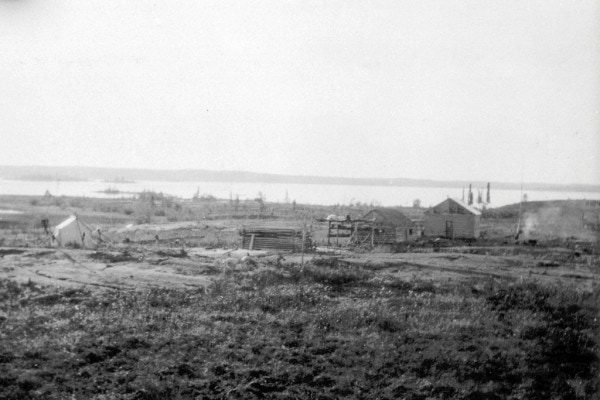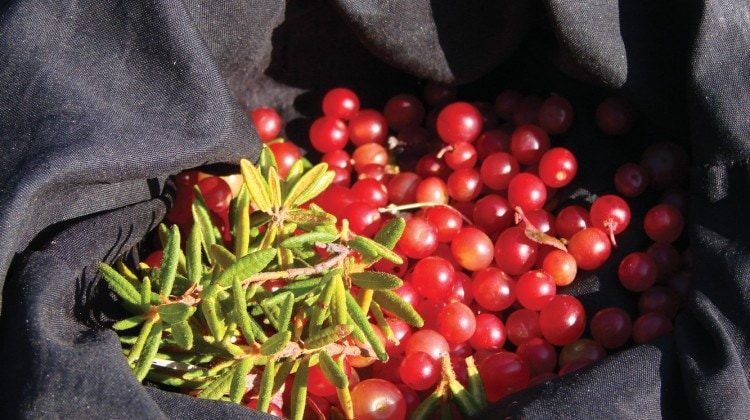by Ryan Silke
Yellowknife Bay became the heartland of aboriginal cultures long before there was a modern settlement on the rocky peninsula we call home today. This is the traditional land of the Weledeh (wiìliìdeh) people, part of the T’satsąot’ınę. The band is known officially as the Yellowknives Dene First Nation. And like all human cultures, they are a product of social, economic, and political history across many generations. To trace their story back to the origins of humans on the North American continent is an insurmountable task, one that traditional knowledge specialists, anthropologists, archaeologists, and geneticists continue to research.
Migrations to a new world
The receding of the glacial ice sheets in northern Canada over 12,000 years ago opened a new corridor for migration from Eastern Siberia. Over many generations, humans spread across the unknown continent in pursuit of ice-age mammals. As the massive ice sheet covering present day Northwest Territories shrank and its melt drained away, the people moved north.
Who were these first people living on the north shore of Great Slave Lake? On the Acasta River, 340 km north of Yellowknife, are some of the oldest clues of Paleoindians, where 7,000-year old charcoal mixed with quartzite flakes were found by archaeologists in fire hearths at the base of a sheltering sand esker. Fires roasted and cracked the hard quartzite rocks to make tools for hunting and preparing hides. An abundance of discarded bones – caribou, bear, beaver, and rabbits – points to an environment very similar to today’s taiga.
Ancestors of the Dene
Shifting climate and the movement of animals displaced humans around the shield for generations. Thirty-five hundred years ago, a Pre-Dorset culture migrated south from the Arctic Ocean. Their activities are typified by unique tools made of chert stone, smaller and better fashioned than what came before. One thousand years later, the Taltheilei Tradition culture arrived at Great Slave Lake, the ancestors of Dene who now live in the NWT.
Many of the lithic artifacts found in this area can be connected to the Taltheilei. Shale, quartz and quartzite were the rocks of choice for creating spear points, knives, and circular scrapers for hide working. Collaborating with traditional knowledge holders, archaeologists are drawn to milky quartz veins and find scatters of flakes and partial tools around them. Then as now, bedrock outcrops allowed for unimpeded travel when faced with thick northern brush and provided a commanding view. The riches of the rocks never went unnoticed to the keen
human eye.
Many of the tools used by aboriginal people were made from organics like wood, skin, and bone, and prone to disappear over time. Only a scattering of lithic tools remain as proof of prehistoric use of the land, and even these are difficult to identify in a landscape overgrown with vegetation and constantly morphing geography. What can be found is often associated with caribou crossings, fishing places, trails, or major camps.
How the world was created
The Dene share their history through stories that channel the earliest common memories, and traditional place names represent an ancient use of the land. Many of the legends are creation myths. Chipewyan Dene believe the planet was first covered by oceans and was the dominion of a mighty bird, who forged the landforms and animals when it descended from the sky. For the Tlicho Dene, their origin was marked by the marriage of a Dene woman to a mysterious man who bore her a litter of dogs that became human during the daylight.
A great creation legend surrounds a powerful medicine man named Yamǫǫ̀zha (Yamoria), a Dene who traveled throughout the Mackenzie River and Great Slave Lake area. Many of his stories revolve around beavers. It is said that he often transformed into animal form, and because of his knowledge and wisdom, he would be called upon to help solve problems caused by clever critters.
The Yellowknife River, or Weledeh, is a major corridor of travel and land use for the Dene. Weledeh translates as Coney River, wèleh referring to the fish inconnu, and deh meaning flowing water or river. It is at Weledeh where spring breakup is first witnessed. This was a good place for families to camp and await the arrival of the first waterfowl and fish moving into the shallower, warmer currents to feed. Although inconnu no longer frequent the river (possibly due to commercial fishing), the Weledeh people have a long history of its banks, especially near Tartan Rapids, among the buried ruins of old dry racks and silvery scales of the wèleh.
During the time of Yamǫǫ̀zha, families camped at the mouth of Weledeh all summer. According to the legends, they had enjoyed years of prosperous fish harvest until a giant beaver arrived and built a mud and stick dam at its mouth, blocking both the flow of the river and access beyond. Fearlessly they tried to drive the beaver away but the beast flipped over canoes and drowned many people. Retaliation appeared useless, and they called the great Yamǫǫ̀zha to help slay the beaver.
Yamǫǫ̀zha revealed his giant snow shovel and wedged it into the beaver dam, breaking it apart. As the defeated beaver swam away into Great Slave Lake, the river was allowed to flow again, pushing the dam aside. The Dene rejoiced in the good fortune, and to this day they gather on the banks of the historic river to celebrate, not far from where the hardened remains of the beaver dam form a jutting rock outcrop, a popular fishing point just south of the river bridge. Yamǫǫ̀zha’s shovel still stands in memory of the giant beaver, in the form of a large sacred tree.
Respecting the land
The Dene fished, hunted, trapped, harvested plants, and traveled, moving seasonally across a broad area of land they knew in intimate detail. There was a great complexity of skills and values they applied to survival. Families relied on fishing, and pursued caribou, moose, mink, and otter from Yellowknife Bay up the river valley into the vast tundra in the winter months, venturing as far as the Coppermine River where their established territory overlapped with Inuit lands. Elders taught the younger generation to never permanently stay at a place where the animals lived or they might be scared away and never return.
Over the course of the 18th and 19th centuries, this way of life slowly incorporated materials from European cultures while remaining embedded in the land. The human history on the north shores of Great Slave Lake is ancient and deeply spiritual. In your travels across the taiga shield, you are walking with ancestors of the Dene and all who came before – your footsteps mingle alongside theirs. Please, tread lightly and respectfully!
If you’re looking to read more about this topic, check out Weledeh Yellowknives Dene: A History, prepared by Yellowknives Dene First Nation, Elders Advisory Council, 1997 or W.C. Noble’s Prehistory of the Great Slave Lake and Great Bear Lake Region, part of the Handbook of the North American Indians – Subarctic, Volume Six.







